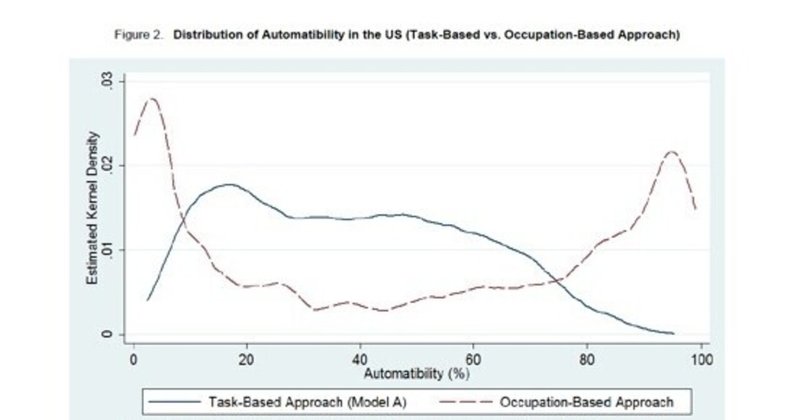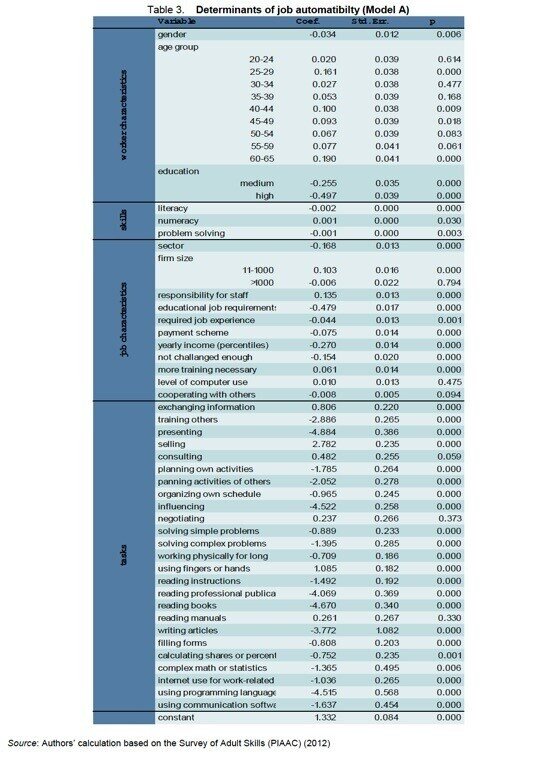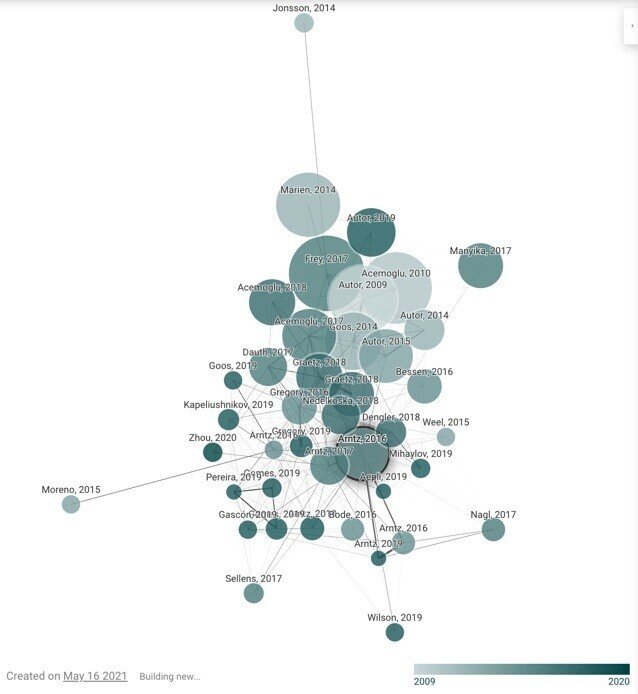
【EL Vol.6】AIによる失業リスクをタスクベースで再評価:The Risk of Automation for Jobs in OECD Countries
仕事のAI化について、Frey and Osborne (2013)は職業ベースのアプローチから米国の47%が失業リスクにさらされていると推計した。しかし職業全体がコンピュータ/ロボットに代替されるかという分析は過大評価なのではないかという懸念から、Arntzら (2016)はタスクベースでの分析を実施した対象をOECD加盟国21カ国とし、職業内における労働者のタスクの不均一性を考慮した結果、平均9%の仕事が自動化可能だと明らかにした。F&O (2013)よりも推計値は小さいこと、国ごとに自動化スコアに開きがあることが指摘されている。
Abstract
In recent years, there has been a revival of concerns that automation and digitalisation might after all result in a jobless future. The debate has been fuelled by studies for the US and Europe arguing that a substantial share of jobs is at “risk of computerisation”. These studies follow an occupation-based approach proposed by Frey and Osborne (2013), i.e. they assume that whole occupations rather than single job-tasks are automated by technology.
As we argue, this might lead to an overestimation of job automatibility, as occupations labelled as high-risk occupations often still contain a substantial share of tasks that are hard to automate. Our paper serves two purposes. Firstly, we estimate the job automatibility of jobs for 21 OECD countries based on a task-based approach. In contrast to other studies, we take into account the heterogeneity of workers’ tasks within occupations.
Overall, we find that, on average across the 21 OECD countries, 9 % of jobs are automatable. The threat from technological advances thus seems much less pronounced compared to the occupation-based approach. We further find heterogeneities across OECD countries. For instance, while the share of automatable jobs is 6 % in Korea, the corresponding share is 12 % in Austria. Differences between countries may reflect general differences in workplace organisation, differences in previous investments into automation technologies as well as differences in the education of workers across countries.
要約
近年、自動化やデジタル化によって、将来的には雇用が失われるのではないかという懸念が再燃している。この議論に拍車をかけているのが、米国や欧州で行われた、仕事のかなりの部分が「コンピュータ化のリスク」にさらされているとする研究である。これらの研究は、Frey and Osborne (2013) が提案した職業ベースのアプローチに従っている。つまり、単一のジョブ・タスクではなく、職業全体がテクノロジーによって自動化されると仮定しているのだ。
我々が論じているように、高リスクの職業とされている職業には、自動化が困難なタスクがかなりの割合で含まれていることが多いため、これは仕事の自動化を過大評価することにつながるかもしれない。本論文の目的は2つある。第一に、タスクベースのアプローチに基づいて、OECD加盟国21カ国の仕事の自動化率を推定する。他の研究とは対照的に、我々は職業内での労働者のタスクの不均一性を考慮している。
その結果、OECD加盟国21カ国の平均で、9%の仕事が自動化可能であることがわかった。したがって、技術の進歩による脅威は、職業ベースのアプローチに比べてはるかに小さいと思われる。さらに、OECD加盟国の間には異質なものが見られる。例えば、自動化可能な仕事の割合は、韓国では6%であるのに対し、オーストリアでは12%である。国ごとの違いは、職場組織の一般的な違い、自動化技術への過去の投資の違い、および国ごとの労働者の教育の違いを反映していると考えられる。





MLA
Arntz, Melanie, Terry Gregory, and Ulrich Zierahn. "The risk of automation for jobs in OECD countries: A comparative analysis." (2016).
Connected Papers

この記事が気に入ったらサポートをしてみませんか?
